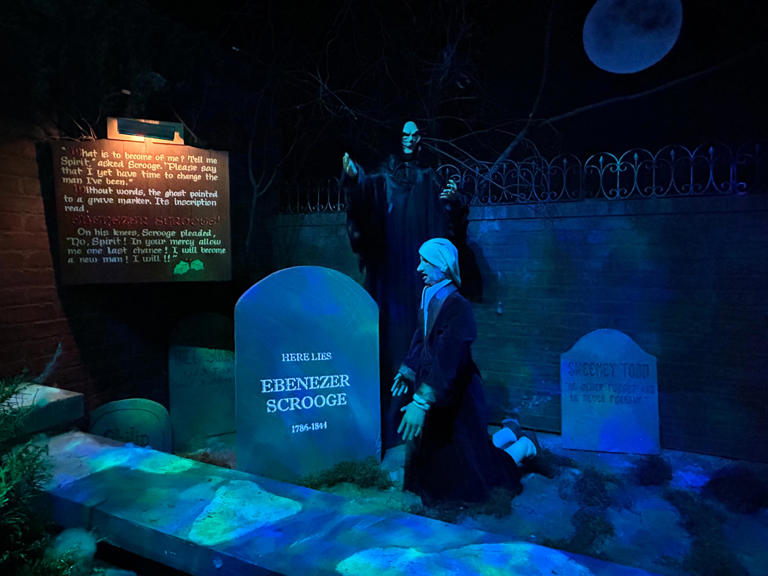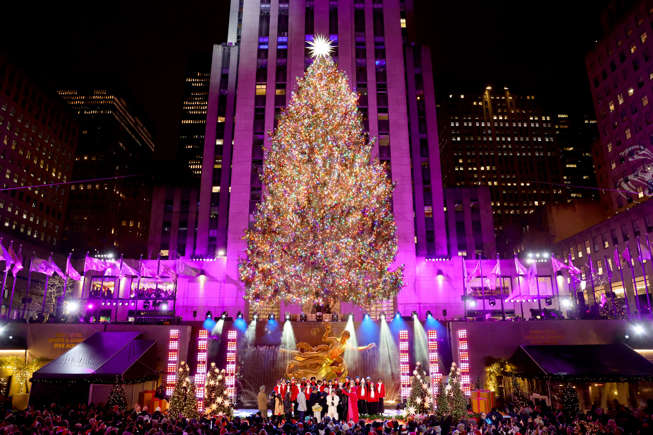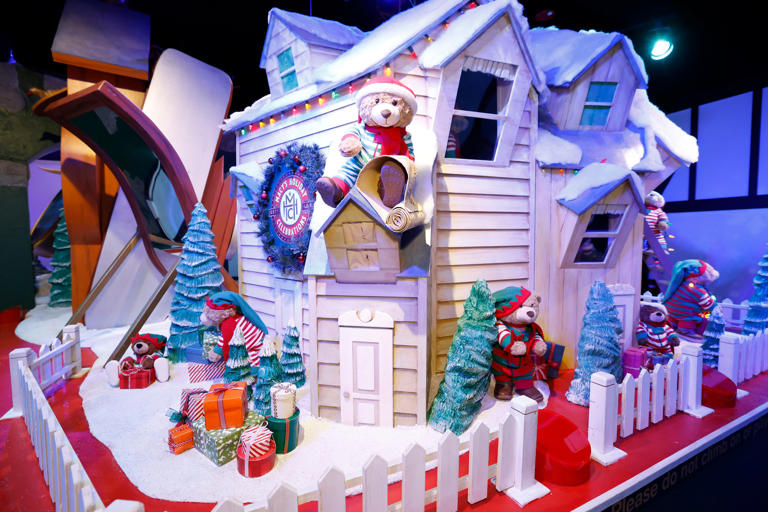By the 1960s, ’70s, and ’80s, Longstreth noted, department stores—and the downtown areas that once housed them—began to change. As suburbanization took off, cities’ commercial districts started to empty out, and shoppers shifted from browsing large downtown stores to spending their afternoons at malls.
“More women were entering the workforce,” Longstreth explained, “which reduced the time available for daylong shopping trips, salon visits, and lunches out.”
Consolidations, closures, and cost-cutting also played a role: iconic shopping destinations like Wanamaker’s, Maison Blanche, Strawbridge & Clothier, Gimbel’s, Horne’s, and Marshall Field’s were either acquired by stronger competitors like Macy’s or shut down entirely as consumer habits shifted toward discount chains like Walmart and Target.
In recent years, as more Americans embraced online shopping and e-commerce platforms grew, malls began to close, and major department stores struggled, with many of their beloved holiday traditions fading away.
In November, Saks Fifth Avenue in New York City announced it would not be holding its annual light show, citing “a challenging year for luxury.”

Traditions evolve, but some do endure.
Even as department stores have faced challenges in recent years, the holiday traditions that continue to thrive are cherished even more by the shoppers who love them.
Mr. Bingle merchandise is still available through Dillard’s, which acquired Maison Blanche. The Macy’s Thanksgiving Day Parade remains a beloved tradition, watched by millions in New York City and across the country. Horne’s iconic Christmas tree is still displayed in Pittsburgh, despite the store’s closure.
Department store windows along Midtown Manhattan’s famous Fifth Avenue continue to amaze and attract crowds of tourists every holiday season.
Additionally, Macy’s continues to showcase its beloved Dickens Village and Holiday Light Show in Philadelphia, alongside elaborate Santaland displays in Herald Square (New York), Chicago’s State Street, and San Francisco.
“Being a central part of the community was a key goal for department store owners,” Longstreth noted. The department stores that have endured understand this and have adapted over time.
Kathleen Wright, director of production operations for Macy’s Studios, shared that the company is committed to keeping its stores “the ultimate holiday destination, whether shoppers are seeking gifts or enjoying the full holiday experience.”
Macy’s Studios works year-round to plan, create, maintain, and improve its shows and displays, including the July 4th fireworks along the Hudson River, the Thanksgiving Day Parade, Santalands, and the Philadelphia Light Show and Dickens Village. “Our goal is to preserve these local traditions,” said Kathleen Wright, “because we understand how meaningful they are to our communities.”
While there have been some changes—such as the introduction of reservations for Santalands and the Dickens Village, and Santas who better reflect Macy’s diverse clientele—one thing remains constant: the experiences are still free and open to everyone.
“Keeping it free is crucial because it’s all about the experience,” Wright explained. “By welcoming people into our stores and offering these experiences, we help create the holiday spirit.”

“It was never just about shopping.”
As new owners took over long-standing retailers, Lisicky noted that many recognized their influence on the community’s identity. “There was an uproar in some cities about them erasing local traditions,” he said, prompting chains to find ways to preserve some of those cherished customs.
Lisicky, who has written 10 books about department stores, believes that “as long as Macy’s exists, the Thanksgiving Day parade will likely continue, and as long as the doors are open in Center City Philadelphia, the light show will remain a tradition.”
In Philadelphia, the Friends of the Wanamaker Organ work closely with Macy’s to help preserve these holiday rituals.
“It was never just about shopping,” Lisicky explained. “Anyone over a certain age will have some kind of memory, especially around Christmas, and their eyes will light up.”
“That’s the magic of Christmas,” he added. “It has that special power.”
The magic was alive on a recent day at the Center City Macy’s in Philadelphia as families explored the store.
Trevor and Rebecca Higginson were managing their four children, ranging from 8 months to 5 years old, on the ground floor, waiting for the Holiday Light Show. Having already visited Santa and walked through the Dickens Village, the Higginsons said it was their first holiday visit, but certainly not their last.
“It was so magical,” Rebecca said.
“It really was,” her husband agreed. “Absolutely magical for the kids. They loved it.”
Phaedra Trethan, who has enjoyed the Dickens Village and the Holiday Light Show in Philadelphia for several years, also returned to experience the festive traditions once again.





